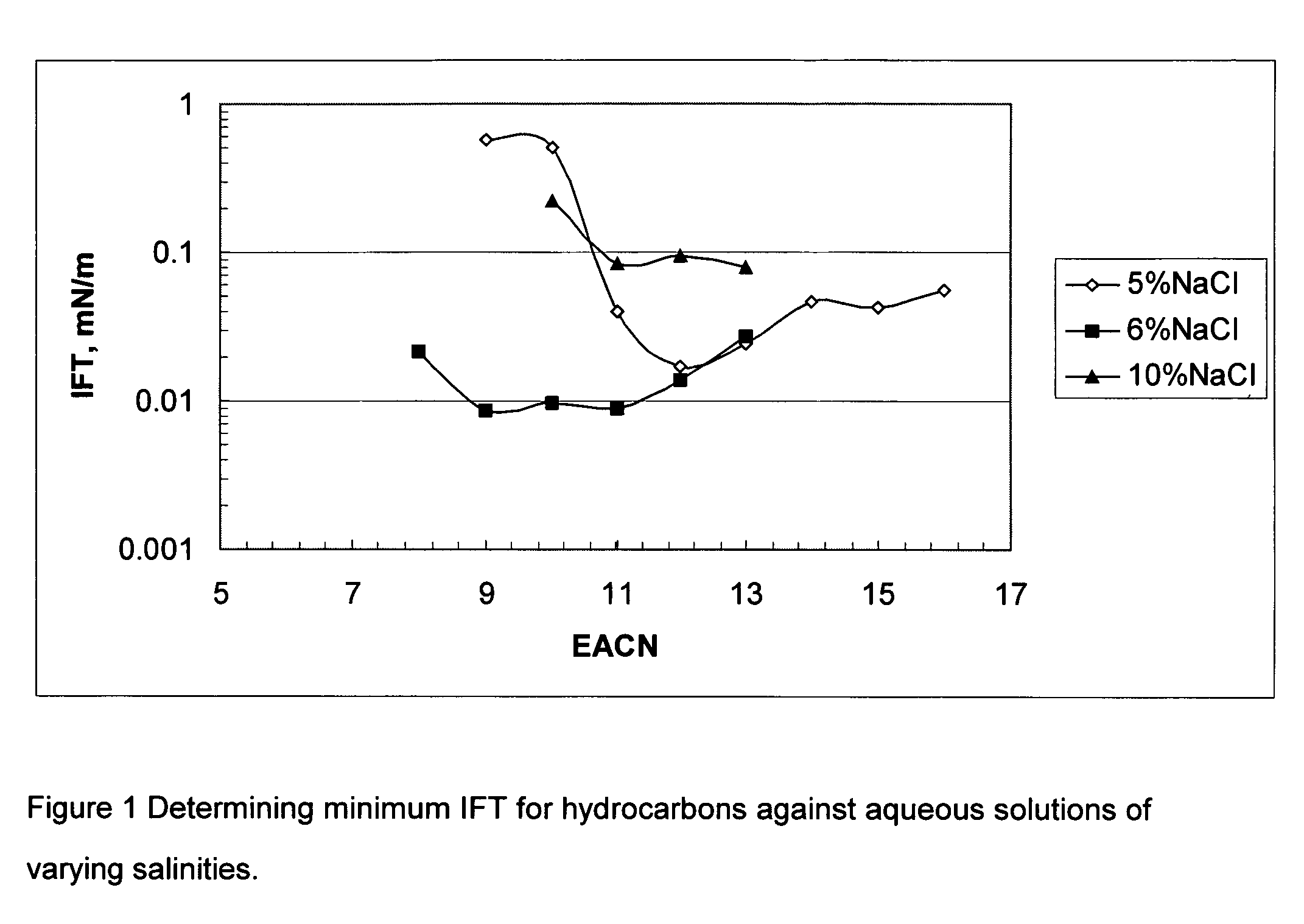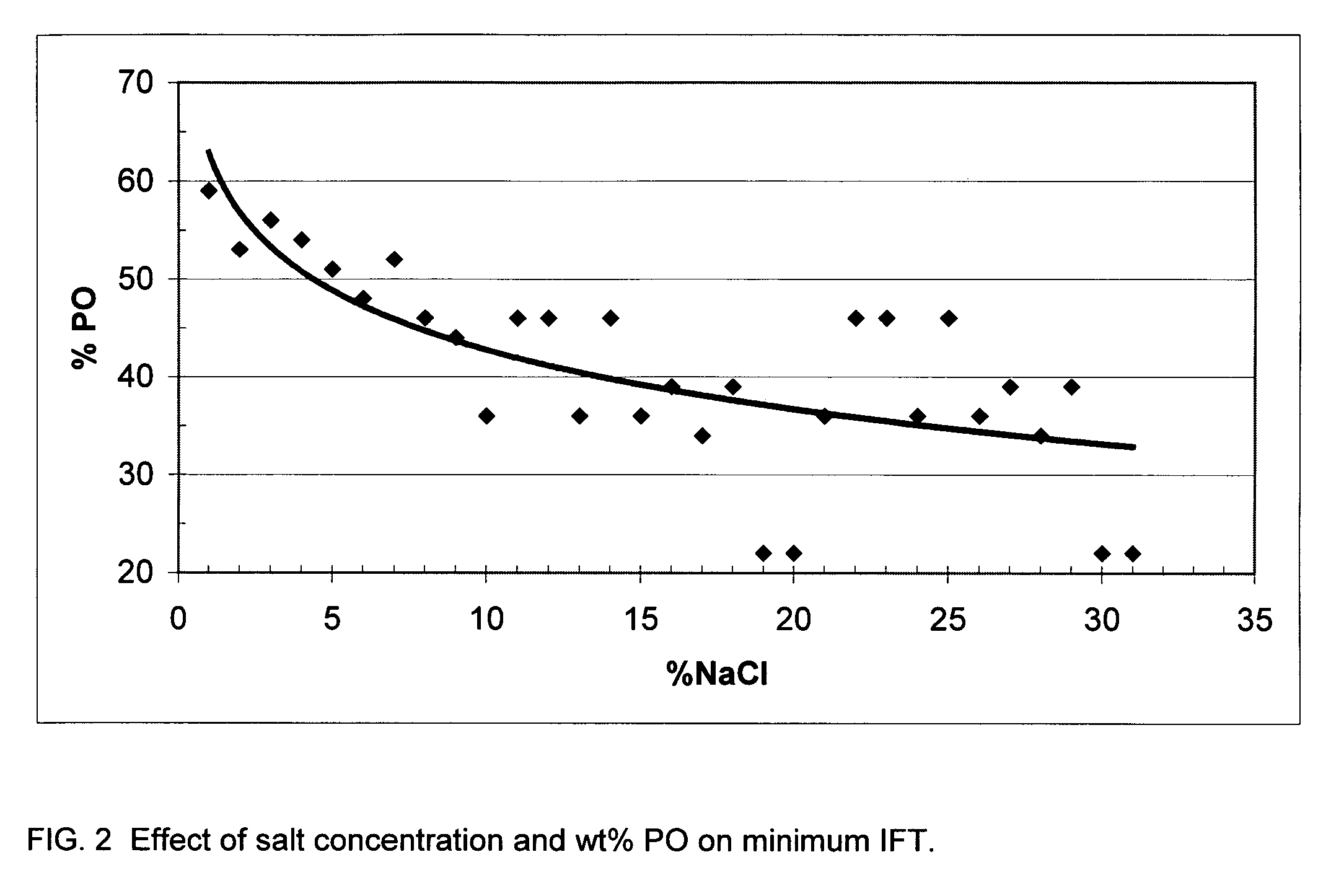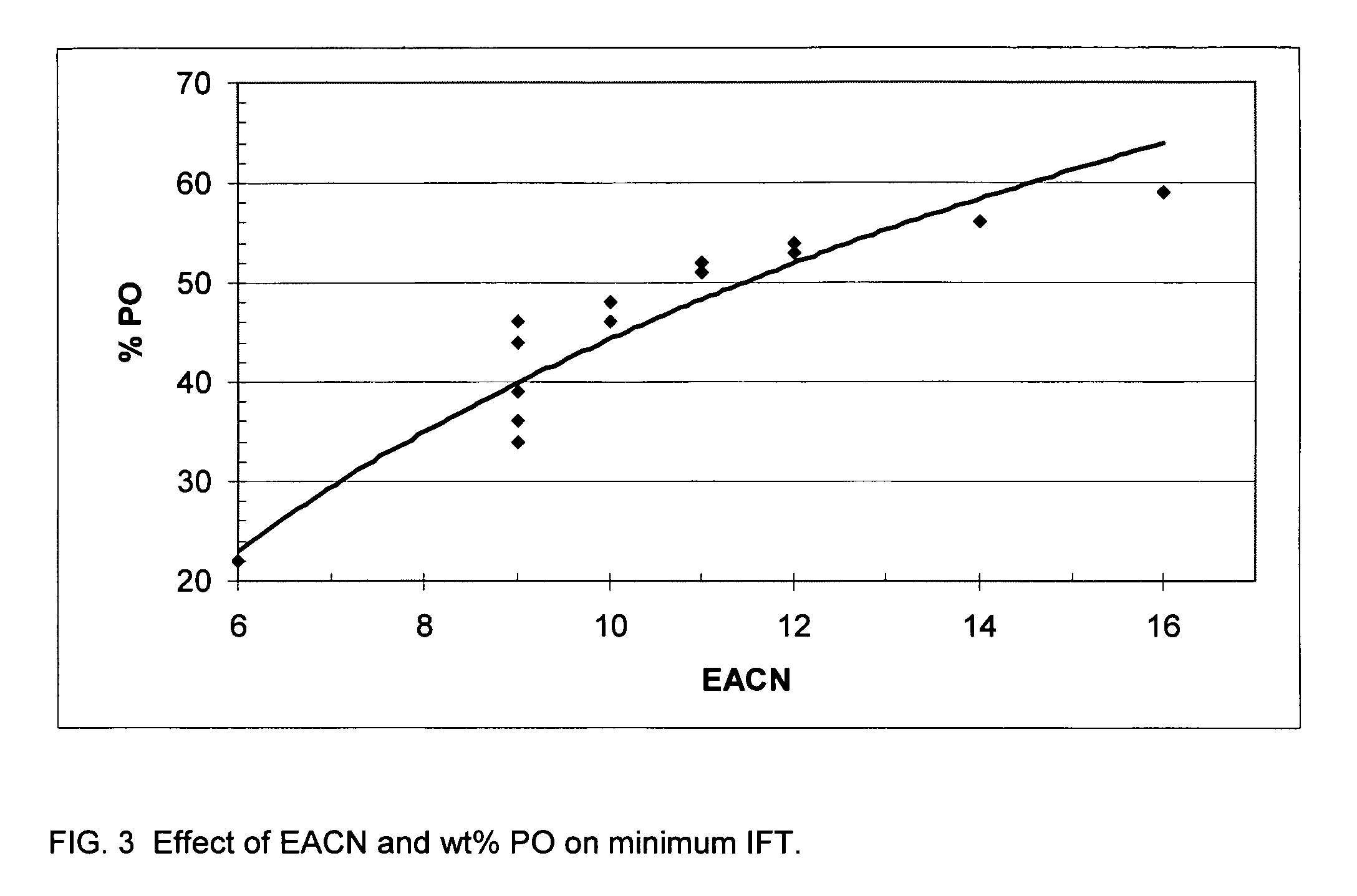Process for recovering residual oil employing alcohol ether sulfonates
a technology of alcohol ether sulfonate and residual oil, which is applied in the field of recovery of crude oil, can solve the problems of limited use of ether sulfonates and unsatisfactory treatment of presently utilized surfactants, and achieve the effect of high total salinity
- Summary
- Abstract
- Description
- Claims
- Application Information
AI Technical Summary
Benefits of technology
Problems solved by technology
Method used
Image
Examples
example 1
[0030]This example illustrates the general procedure for the preparation of the alcohol ether sulfonates used in the present invention. In this case the preparation of the alkyl ether sulfonate derived from oleyl alcohol having 6 moles of propylene oxide (PO) is described. The following example starts with the alkoxylated alcohol, however, the acetate ester of the alkoxylated alcohol may also be used as the starting material as described in the aforementioned U.S. Pat. No. 4,865,774.
[0031]An unsaturated oleyl alcohol was propoxlated with 6 moles of propylene oxide using technology commonly known to the art. The propoxylate was sulfonated with sulfur trioxide (SO3) using a thin film air / SO3 unit as is also well known in the art. This reaction is shown in reaction I below. The resulting oleyl ether sulfonic / sulfate acid was immediately neutralized with aqueous sodium hydroxide to give a 40% solution of the oleyl ether sulfate / sulfonate salt (reaction II below). The 40% solution was su...
example 2
[0033]This example illustrates the effectiveness of the alcohol ether sulfonate in lowering IFT for a particular EACN and salinity.
[0034]Solutions of 5, 6, and 10 wt % NaCl each containing 0.3 wt % of the oleylether sulfonate from reaction IV of Example 1 were prepared. The interfacial tensions of each of these solutions against a series of pure hydrocarbons was measured at 25° C. after 30 minutes contact time using a UT Model 500 spinning drop interfacial tensiometer. The results obtained are shown in FIG. 1.
[0035]From the results of FIG. 1 the EACN where the minimum IFT occurs for each salt concentration can be obtained. These results show the relationship of the IFT at various NaCl concentration for different hydrocarbons. The hydrocarbons are designated by their EACN on FIG. 1. For example octane is shown with an EACN of 8, dodecane with an EACN of 12.
example 3
[0036]This example illustrate the effect of moles PO and EO on the IFT reduction properties of the alcohol ether sulfonates at various salinities using dodecane (EACN=12) as the oil. The reactions used to prepare the oleyl ether sulfonates are as described in Example 1 above.
[0037]Table 1 shows the relationship between the number of moles of propylene oxide and the wt % propylene oxide for the various oleyl ether sulfonates studied. Each oleyl ether sulfonate was prepared from the corresponding oleyl alcohol ether using the procedure previously described.
[0038]
TABLE 1Oleyl Ether SulfonatesSample No.Moles POMole EO% PO by wtOleyl Ether Sulfonate 2-02022Oleyl Ether Sulfonate 4-04036Oleyl Ether Sulfonate 6-06046Oleyl Ether Sulfonate 6-16144Oleyl Ether Sulfonate 6-26241Oleyl Ether Sulfonate 6-36338Oleyl Ether Sulfonate 8-08053Oleyl Ether Sulfonate 8-18151Oleyl Ether Sulfonate 8-28248Oleyl Ether Sulfonate 8-38346Oleyl Ether Sulfonate 8-48444Oleyl Ether Sulfonate 10-010059Oleyl Ether Sulf...
PUM
| Property | Measurement | Unit |
|---|---|---|
| temperature | aaaaa | aaaaa |
| Interfacial Tension | aaaaa | aaaaa |
| wettability | aaaaa | aaaaa |
Abstract
Description
Claims
Application Information
 Login to View More
Login to View More - R&D
- Intellectual Property
- Life Sciences
- Materials
- Tech Scout
- Unparalleled Data Quality
- Higher Quality Content
- 60% Fewer Hallucinations
Browse by: Latest US Patents, China's latest patents, Technical Efficacy Thesaurus, Application Domain, Technology Topic, Popular Technical Reports.
© 2025 PatSnap. All rights reserved.Legal|Privacy policy|Modern Slavery Act Transparency Statement|Sitemap|About US| Contact US: help@patsnap.com



